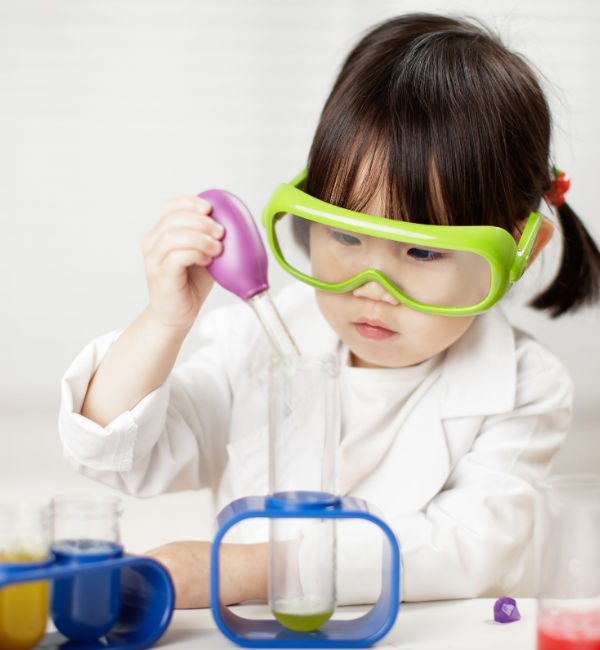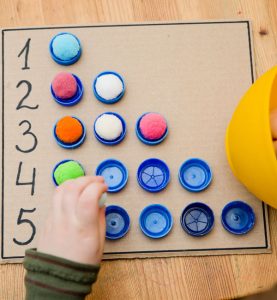OUR CURRICULUM
Holland Marsh Montessori School
The Montessori classroom is what Dr. Maria Montessori called the prepared environment. The materials in the classroom are not only developmental but aid for life. The prepared environment has several functions. The environment is attractive aesthetically and practical for children of different ages. It is organized and orderly to stimulate the child into purposeful activities. The physical aspects of the environment facilitate the child’s independent use of the materials.

5 MAIN AREAS OF CURRICULUM
The classroom is set up to encompass five main curriculum areas. These are practical life, sensorial, arithmetic, language, and culture. The students will be working with the materials and demonstrating the various areas of our curriculum.
Mathematics
Language
Practical Life
Culture
Sensorial
Practical Life
The practical life activities in Montessori education serve as a bridge between the home and the classroom, helping children adapt to their environment and acquire skills that are essential for daily living. These activities enable children to gain a sense of order, develop concentration and focus, refine their fine and gross motor skills, and enhance their ability to care for themselves and their environment. Practical life activities encompass a wide range of tasks that are familiar and meaningful to children. Examples include pouring liquids, spooning, buttoning, zipping, folding, sweeping, polishing, table setting, food preparation, and caring for plants and animals. These activities are carefully designed to be developmentally appropriate, progressively challenging, and encourage children to engage in purposeful, independent work.
Practical Life exercises allow them to participate in real life and encourage self-sufficiency. Children learn how to choose and make a decision, and develop the movement of mind and body (i.e. concentration and coordination), orderly habits, responsibility, self-esteem, and social manners. Practical life activities are integrated into other areas of the Montessori curriculum, including language, math, sensorial, and cultural studies.
Exercises Include Care of the Inside Environment, Care of the Person, Grace and Courtesy, Control of Movement, etc.
Sensorial
The sensorial curriculum aims to provide children with concrete experiences that refine their senses, enhance their perception, and lay the foundation for abstract thinking and problem-solving. Montessori sensorial materials are specifically designed to isolate and emphasize one particular quality or sensory attribute at a time, allowing children to focus on specific characteristics such as color, shape, size, texture, weight, sound, taste, and smell. Examples of sensorial materials include the Pink Tower (varying sizes of wooden cubes), the Color Tablets (matching and grading colors), the Binomial Cube (visual discrimination and spatial relationships), the Sound Cylinders (auditory discrimination), and the Smelling Bottles (olfactory discrimination).These materials are used by children to consciously classify the sense impressions that are received. They build up cognitive capabilities to their full potential. Each exercise isolated one concept (i.e. length) for exploration. Activities encourage grading and sequencing which is future preparation for Math and Language work. Many of the materials are self-correcting which develops independence. Colour, texture, taste, sound, and smell are individually introduced. Each exercise provides a key that motivates children to explore the environment through games and later appropriate language is added to enrich the experience.
Senses Explored: Visual, Tactile, Auditory, Olfactory, and Taste Senses
Mathematics
Mathematics is based on order, classification, and quantities. It is pure logic that depends on cause and effect. Order, precision, and exactness in the environment will draw children naturally into math. Our Curriculum emphasizes the use of concrete materials to help children visualize and internalize mathematical concepts. Manipulatives like counting beads, number rods, and geometric shapes enable children to physically interact with the materials, developing a solid foundation of mathematical understanding.
Each exercise has a specific purpose (i.e., learning numbers to ten) and allows repetition and exploration. Before children come to math, practical life has been introduced which helps establish a sense of order. Sensorial is a foundation for all math activities and introduces some of the language of Math (i.e., long, longer, longest).
The Montessori math curriculum introduces children to geometry by allowing them to manipulate geometric shapes and explore their properties. Children learn about shapes, patterns, sizes, and spatial relationships, and develop an understanding of concepts like symmetry and congruence. Problem-solving activities are an integral part of the Montessori math curriculum.

Exercises Include Number recognition and counting, Number operations, Recognizing geometric shapes and their properties., Measurement and Problem Solving activities
Language, Phonetics
Language acquisition is a learned behavior that is critical to a child’s development, especially during their formative years. For this reason, we employ specially designed materials that help break down language into its individual components, such as the alphabet, numbers, and greetings. By engaging the ear, eye, and hand through exercises, we help children develop the skills they need to listen, speak, and eventually write with confidence. Montessori language activities help children develop phonemic awareness through games, songs, rhymes, and sound discrimination exercises. They learn to recognize and differentiate between sounds, laying the foundation for reading and writing. Our Montessori language curriculum extends beyond basic reading and writing skills. children engage in activities that promote comprehension, critical thinking, and creative expression. They explore literature, engage in group discussions, retell stories, and engage in drama, poetry, and other forms of language-related arts.
Exercises Include Sound Pouches for Phonetics, Moveable alphabets and Sandpaper Letters and Numbers, Metal Insets for writing, Introduction to multilingual vocabulary (alphabet, numbers, greetings, etc.), etc.
Culture
Children come into our environment trying to find their place in the world. Soon, they are curious about the world around them. How do we fit into the animal kingdom? How do we affect the plant world? Where are we in relation to other human beings? Culture is there when children are ready to explore beyond their immediate surroundings. It’s the curiosity of what lies beyond their backyard.
Geography is a central component of the Montessori culture curriculum. Children are introduced to the world’s continents, countries, and physical features through the use of maps, puzzle maps, globes, and other materials. hey learn about landforms, climates, ecosystems, and cultural diversity, gaining a broader perspective of the world. It introduces children to key historical concepts and events. Our Montessori culture curriculum promotes a sense of wonder and exploration of the natural world.
Areas Explored: The Living World, Botany, Zoology, Geography, Past Civilizations, etc
EXTRACURRICULAR ACTIVITIES
To further demonstrate our dedication to providing top-notch education, we offer enrichment programs & extracurricular activities alongside the Montessori curriculum, enabling children to explore their interests and further their educational experiences.
STEM PROGRAM
STEM PROGRAM
FRENCH
FRENCH
MUSIC AND MOVEMENT/YOGA PROGRAM
MUSIC AND MOVEMENT/YOGA PROGRAM
ART PROGRAM
ART PROGRAM
STEM PROGRAM
Our STEM programs prepare children for modern technology, fostering curiosity and strengthening cognitive development. They learn that it is okay to fail, as it is a natural part of learning and success. STEM also encourages hands-on learning and creativity, laying the foundation for future academic success.
FRENCH
We teach French vocabulary, such as the alphabet, numbers, and simple greetings, to children through fun activities like games, stories, and songs. Learning multiple languages at a young age can improve critical thinking skills, making learning easier, and even help children form new friendships.
MUSIC AND MOVEMENT/YOGA PROGRAM
Our music and movement/yoga program is designed to engage the bodies and minds of all children. Yoga helps build strength, coordination, flexibility, and balance, while also improving concentration and expanding awareness. Additionally, it can help children cope with stress and regulate their emotions in daily life.
ART PROGRAM
Our art program encourages children to express themselves, build their confidence, and cultivate an appreciation for the arts. Through art, children can learn how to communicate and expand their knowledge of the world. It can also help with language development, numeracy skills, and physical development.
